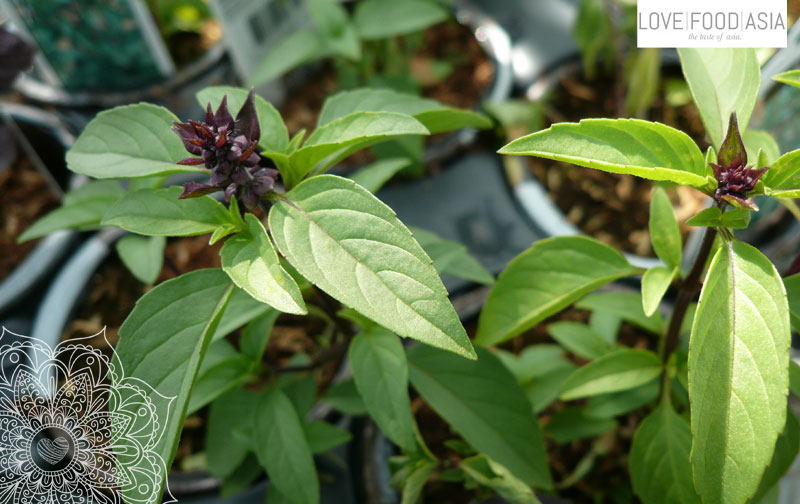Thai Basil
Thai basil (Thai: โหระพา;Vietnamese: húng quế) is a type of basil native to Southeast Asia that has been cultivated to provide distinctive traits. Widely used throughout Southeast Asia, its flavor, described as anise- and licorice-like and slightly spicy, is more stable under high or extended cooking temperatures than that of sweet basil. Thai basil has small, narrow leaves, purple stems, and pink-purple flowers.
In our garden we have a lot of different herbs but Thai Basil is one of the most used herbs.
Thai basil is widely used in the cuisines of Southeast Asia, including Thai, Vietnamese, Lao, and Cambodian cuisines. Thai basil leaves are a frequent ingredient in Thai green and red currys, though in Thailand the basil used in drunken noodles and many chicken, pork, and seafood dishes is holy basil. In the West, however, such dishes typically contain Thai basil instead, which is much more readily available than holy basil. Thai basil is also an important ingredient in the very popular Taiwanese dish sanbeiji (three-cup chicken). Used as a condiment, a plate of raw Thai basil leaves is often served as an accompaniment to many Vietnamese dishes, such as phở, bún bò Huế, or bánh xèo, so that each person can season to taste with the anise-flavored leaves.
There are many recipes with Thai Basil but here are our two favorites:
What du you think?
We are interested in your opinion. Have you tried this recipe? Let us know how you liked it. Make a comment, rate it or post your own photo with #lovefoodasia on Instagram. Thanks for your support!



